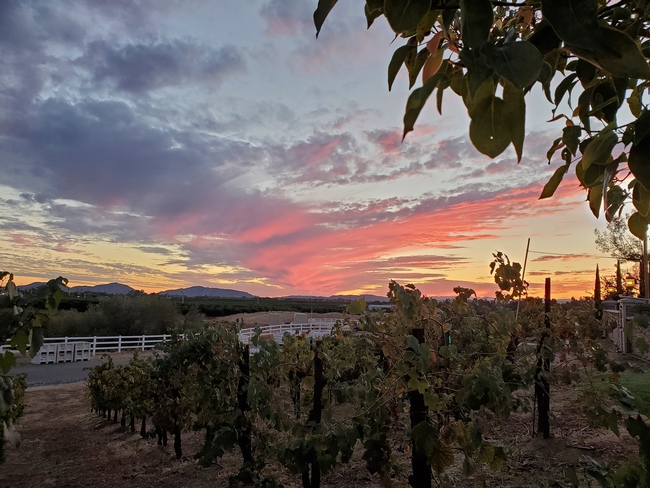
Posts Tagged: Weeds Affecting Plants
Suppliers, retailers warn California grape growers of herbicide shortages
Supply-chain crisis forces some to pivot to mechanical, biocontrol measures
Driving through her vineyards on a chilly morning in December, Hortencia Alvarado is taking comfort – for now – that the weeds she sees are all yellow. But there remains a nagging worry that, like the pesky plants, is merely lying dormant for the season.
When March rolls around, and the first signs of new green growth appear on the vines, Alvarado and other vineyard managers will again have to confront the ongoing shockwaves of the global supply-chain crisis.
Growers of grapes – the third-highest valued agricultural commodity in California at $4.48 billion in 2020 – likely won't be able to access the herbicides that they usually apply.
“I definitely need to start thinking and considering it because I don't want to be in that situation where I don't have [the herbicide] when I need it,” said Alvarado, a vineyard manager in the San Joaquin Valley.
Imperfect alternatives
She first noticed the effects of the shortages this past August, during the application following the harvest of early varietals. Alvarado's agricultural pest control adviser had recommended a different product, instead of their usual standby, Rely – because none of the handful of suppliers in California could find it.
Then Alvarado's foreman started reporting that the substitute wasn't controlling the weeds.
“We were using some other stuff that wasn't as good, so basically we were wasting money on stuff that wasn't doing what we wanted it to do,” Alvarado explained.
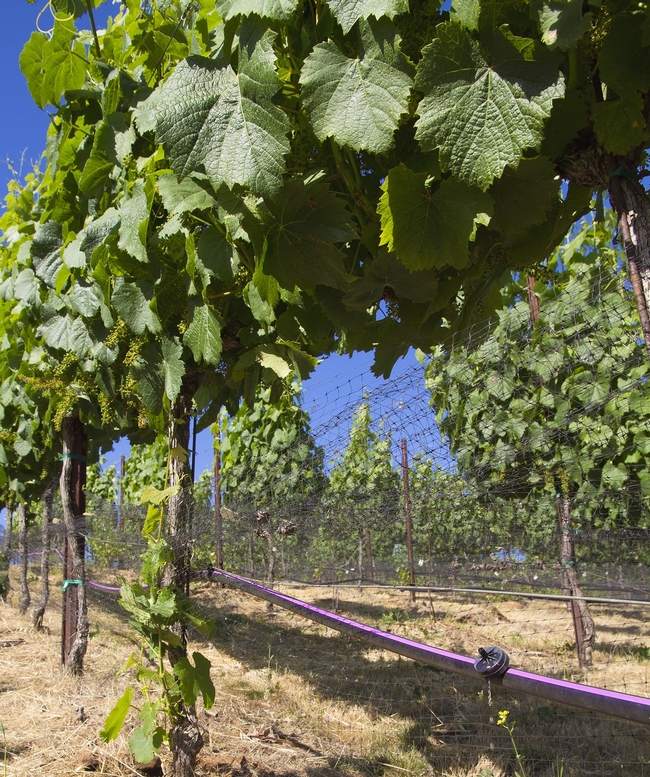
The need for more machines or labor is just one result of the herbicide shortage, said George Zhuang, University of California Cooperative Extension viticulture farm advisor in Fresno County. Zhuang has received “a lot” of calls from growers about the chemical supply issues, which are also affecting fertilizers. He's been urging them to move away from traditional herbicides to mechanical means or biocontrol such as sheep or fowl – even though they might be more expensive.
Zhuang estimates that while a weed program comprises 5% to 10% of total production costs in a normal year with the usual herbicides, the use of nonchemical alternatives could hike that percentage up to 10% to 20%. In addition to their impact on the bottom line, effective herbicides are especially crucial to grape growers because vines – unlike tree crops – cannot naturally shade out weeds with expansive canopies.
“Right now, people can still scramble around and find some limited chemicals to make sure the crop is successful for the harvest, but if the situation goes for another year, I think there's going to be a panic in farming communities,” Zhuang said.
Herbicide challenges expected to linger
Unfortunately, the availability of certain products is likely going to be “challenged” into at least the middle of 2022, according to Andy Biancardi, a Salinas-based sales manager at Wilbur-Ellis, an international marketer and distributor of agricultural products and chemicals. Biancardi said that the suppliers he talks to are advising people to make preparations.
The supply of glyphosate, the key component in products such as RoundUp (used by many Midwestern farmers), appears to be most affected, Biancardi said. As a result, that shortage has put the squeeze on alternatives such as glufosinate, used in products like Rely – the herbicide favored by many California grape growers.
“The cost of glufosinate has definitely gone up because there just isn't enough, so everyone is obviously marking it up,” said Biancardi, who estimates that prices for both glyphosate and glufosinate are up 25% to 30% for growers.
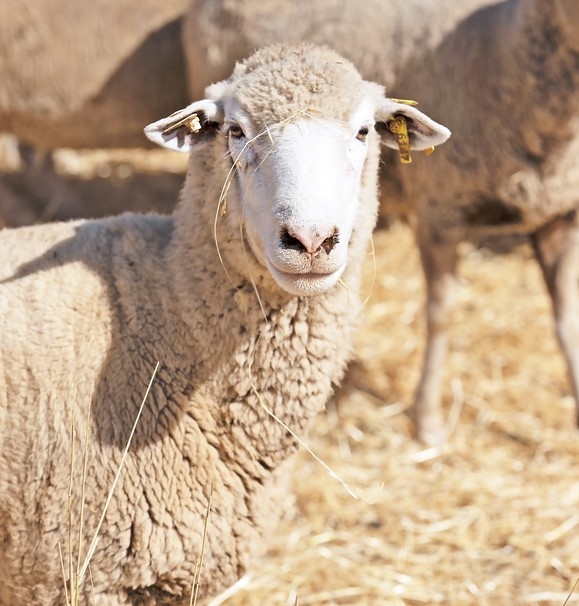
Alvarado said that while large commercial operations are able to pay the premium prices or shift to other weed control measures, some smaller growers have essentially given up the fight – simply letting the weeds take over.
“They're just letting it go wild until the dormant season,” she said. “They're hoping that – by when they do start to spray [around March] – they'll hopefully have that Rely.”
Silver lining to supply crisis?
Large-scale growers and retailers are buying up those scarcer products when they can, in anticipation of future shortages during critical times. Biancardi said that while his company traditionally runs inventories down at the end of the season, they are instead stocking up on herbicides that customers will demand.
“Careful planning and forecasting is going to be more important than ever, that's really the key,” he said. “At this point we can't guarantee ‘business as usual,' based on what we're hearing.”
Shaking off old habits might actually bring some benefits to business, according to Alvarado, as a forced shift away from chemicals could prove to be a selling point for customers, from a sustainability and marketing standpoint.
“Out of this shortage, there might be some good, some wins,” she said, “but at the same time, we're going to need some answers – I think it's going to be a bumpy road.”
Calling the confluence of drought, record heat and a shortage of chemicals a “perfect storm,” Zhuang said that consumers could start feeling those jolts as well.
“Eventually, somebody is going to eat the costs – either the farming community or the consumer is going to eat the cost, I hate to say it,” he said.
SUPPRESS® Herbicide for use in Rice Weed Control
SUPPRESS® herbicide EC, a product manufactured by Westbridge Agricultural Products, was registered in California in 2015. Its active ingredients are Caprylic Acid and Capric Acid. It is registered for use in organic production, and it is labeled for use in “agricultural food and non-food...
Collecting weed seeds and new watergrass weed species
There are two (2) new posts on the UC Rice Blog written by Whitney Brim-DeForest, Cooperative Extension Rice Advisor. It's that time again: Collect Weed Seeds for Herbicide Resistance Testing! New Watergrass Species: be on the lookout for this weed!
How does herbicide resistance evolve? An illustrated guide
We talk about herbicide resistance all of the time in California rice, but how does it evolve in a field? Understanding how herbicide management selects for resistant populations is an important part of preventing the problem from occurring in your fields. We have many weed species in CA rice that...
2016 CA RICE WEED HERBICIDE SUSCEPTIBILITY CHART
Top 10 pests in gardens and landscapes and how to control them
Download the free booklet at the bottom of the page!
1. Ants

Most people deal with ants around their home at some point. Because most ants live outdoors, focus efforts on keeping ants from entering buildings by caulking entryways. Follow good sanitation practices to make your home less attractive to ants. Spraying ants inside the home will not prevent more ants from entering. Use baits to control the ant colony. Pesticide baits work by attracting worker ants who then take the poison back to the nest where the entire colony, including queens, can be killed. In the landscape, ants protect honeydew-producing pest insects from predators, so use sticky barriers or insecticide baits to keep ants out of trees and shrubs.
- Find out more at http://www.ipm.ucanr.edu/QT/antscard.html
2. Aphids

Aphids can curl leaves and produce sticky honeydew, but they rarely kill plants and you usually can wash them off with water. When aphid numbers get high, natural enemies such as lady beetles (lady bugs), lacewings, syrphid fly larvae, soldier beetles and others frequently feed on them, eliminating the need for pesticides. Protect these good bugs by avoiding the use of insecticides that can be toxic to a broad variety of insects. Ants protect aphids from these natural enemies, so keep ants away from your garden as well. When pesticides are necessary, use less toxic products such as insecticidal soaps and oils.
- Learn more about controlling aphids here: http://www.ipm.ucanr.edu/QT/aphidscard.html
3. Asian citrus psyllid and Huanglongbing disease

The Asian citrus psyllid (ACP) and the deadly bacterial disease it spreads, Huanglongbing (HLB), threaten citrus trees in backyards and on farms. There is no cure or effective control method for HLB disease. All types of citrus—including oranges, grapefruit, lemons, and mandarins—are affected as well as a few closely related ornamentals. ACP and HLB have already devastated the Florida citrus industry, and now that it is in the Western U.S. it is threatening the California citrus industry as well.
- See where the outbreaks are in California with our helpful Asian citrus psyllid website: http://ucanr.edu/sites/ACP/Distribution_of_ACP_in_California/
- Contact your agricultural commissioner's office, or call the California Department of Food and Agriculture (CDFA) Exotic Pest Hotline at 1-800-491-1899 to confirm a find. Learn more about ACP here: http://www.ipm.ucanr.edu/QT/asiancitruscard.html
4. Gophers

Gophers are small burrowing rodents that feed on roots of many types of plants. A single gopher can ruin a garden in a short time, and gopher gnawing can damage irrigation lines and sprinkler systems. In lawns, their mounds are unsightly and interfere with mowing. Early detection is critical to prevent damage. Use both traps and underground fencing to manage gopher problems. Toxic baits are available but can pose threats to wildlife, pets, and children, especially in backyard situations.
- Learn more about protecting your garden and landscape from gophers here: http://www.ipm.ucanr.edu/QT/gopherscard.html
5. Leaf-feeding caterpillars

Caterpillars, which are the larvae of butterflies and moths, damage plants by chewing on leaves, flowers, shoots, and fruit. Caterpillars in fruit or wood can be difficult to manage because they are hidden most of their life and can cause serious damage even when numbers are low. However, many plants, especially perennials, can tolerate substantial leaf damage, so a few leaf-feeding caterpillars often aren't a concern. Handpicking and beneficial predators and parasites often provide sufficient control. Look for feeding holes, excrement, webbed or rolled leaves, caterpillars, eggs, and good bugs.
- Learn more here:http://www.ipm.ucanr.edu/QT/lfcaterpillarscard.html
6. Peach leaf curl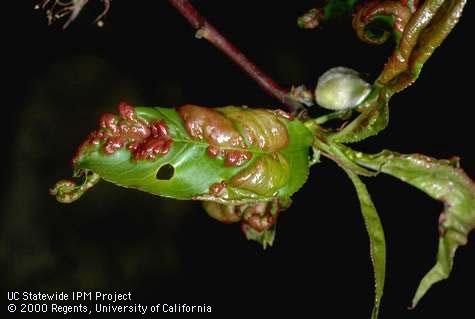

Peach leaf curl is a fungal disease that affects only peach and nectarine trees. Distorted, reddened foliage in the spring is a distinctive symptom. New leaves and shoots thicken and pucker and later may die and fall off. An infection that continues untreated for several years can lead to a tree's decline. To prevent peach leaf curl, treat peach and nectarine trees with a copper fungicide every year after leaves fall. After symptoms appear in the spring, any treatment will not be effective. When planting new trees, consider buying peach tree varieties that are resistant to the disease.
- To learn more about preventing peach leaf curl click here: http://www.ipm.ucanr.edu/QT/peachleafcurlcard.html
7. Rats

Rats eat and contaminate food, garden produce, and fruit, and transmit diseases to humans and pets. Manage rats by removing food and shelter, eliminating entryways into buildings, and trapping. Snap traps are the safest, most effective, and most economical way to trap rats. For Norway rats, place traps close to walls, behind objects, in dark corners, and in places where you have found rat droppings. For roof rats, place traps in off-the-ground locations such as ledges, shelves, branches, fences, pipes, or overhead beams. Ensure traps are out of reach of children and pets.
- Learn more about preventing and controlling rats here: http://www.ipm.ucanr.edu/QT/ratscard.html
8. Scales

Scale insects suck plant juices and are pests of many trees and shrubs. Infestations can cause yellowing or premature dropping of leaves, sticky honeydew, and blackish sooty mold. Plant parts can distort or die back, depending on the species and abundance of scales. Most plants tolerate low to moderate numbers of scales. Provide plants with proper cultural care, especially irrigation. Encourage scale predators such as lady beetles or lacewings and look for parasite emergence holes in scale covers. Use sticky barriers or insecticide baits to selectively control scale-tending ants. Consider replacing problem-prone plants because most scales are highly specific to certain plants.
- Learn more about controlling scale populations here: http://www.ipm.ucanr.edu/QT/scalescard.html
9. Snails and slugs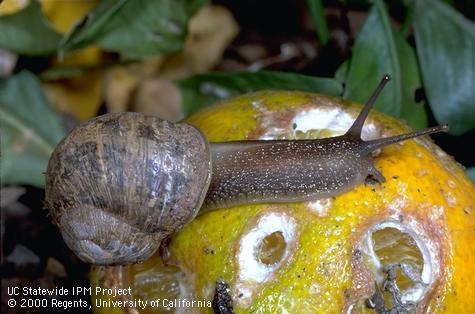

These slimy mollusks emerge from hiding at night and chew holes in leaves and flowers of many succulent garden plants and fruit. Management requires a vigilant and integrated approach that includes eliminating moisture and hiding spots, trapping, setting up barriers, and handpicking. Regularly remove snails from shelters you can't eliminate such as low ledges on fences, undersides of decks, and meter boxes. Place traps in your garden and dispose of trapped snails and slugs daily. Reduce moist surfaces by switching to drip irrigation or watering in the morning rather than later in the day. Consider snail-proof plants such as impatiens, geraniums, begonias, lantana, nasturtiums, and many plants with stiff leaves and highly scented foliage such as sage, rosemary, and lavender.
- Learn more about controlling snails and slugs with and without pesticides in your garden here: http://www.ipm.ucanr.edu/QT/snailsslugscard.html
10. Weeds in landscapes

Prevent weed invasions in new beds with good site preparation. Keep weeds out with an integrated program that includes competitive plants, mulches, and hand removal. Be particularly vigilant about removing aggressive perennial weeds. You rarely should need herbicides in established landscape plantings. Mulches prevent weed seed germination by blocking sunlight. Remove small weeds by hand before they flower and set seed. Use shallow cultivation or hoeing to remove annual weeds from ornamental plantings. Only use herbicides for special-problem situations before establishing new plantings or for difficult-to-control perennial weeds.
- Learn more about controlling weeds in your landscape here: http://www.ipm.ucanr.edu/QT/landscapeweedscard.html
To see all of the University of California's Statewide Integrated Pest Management Program's information on home, garden, and landscape pests, visit http://www.ipm.ucanr.edu/PMG/menu.homegarden.html
For other short pest “Quick Tips” like the ten above, see http://www.ipm.ucanr.edu/QT/
To read even more in-depth, peer-reviewed information on many other common home and landscape pests in California, see the Pest Notes series at http://www.ipm.ucanr.edu/PMG/PESTNOTES/index.html

